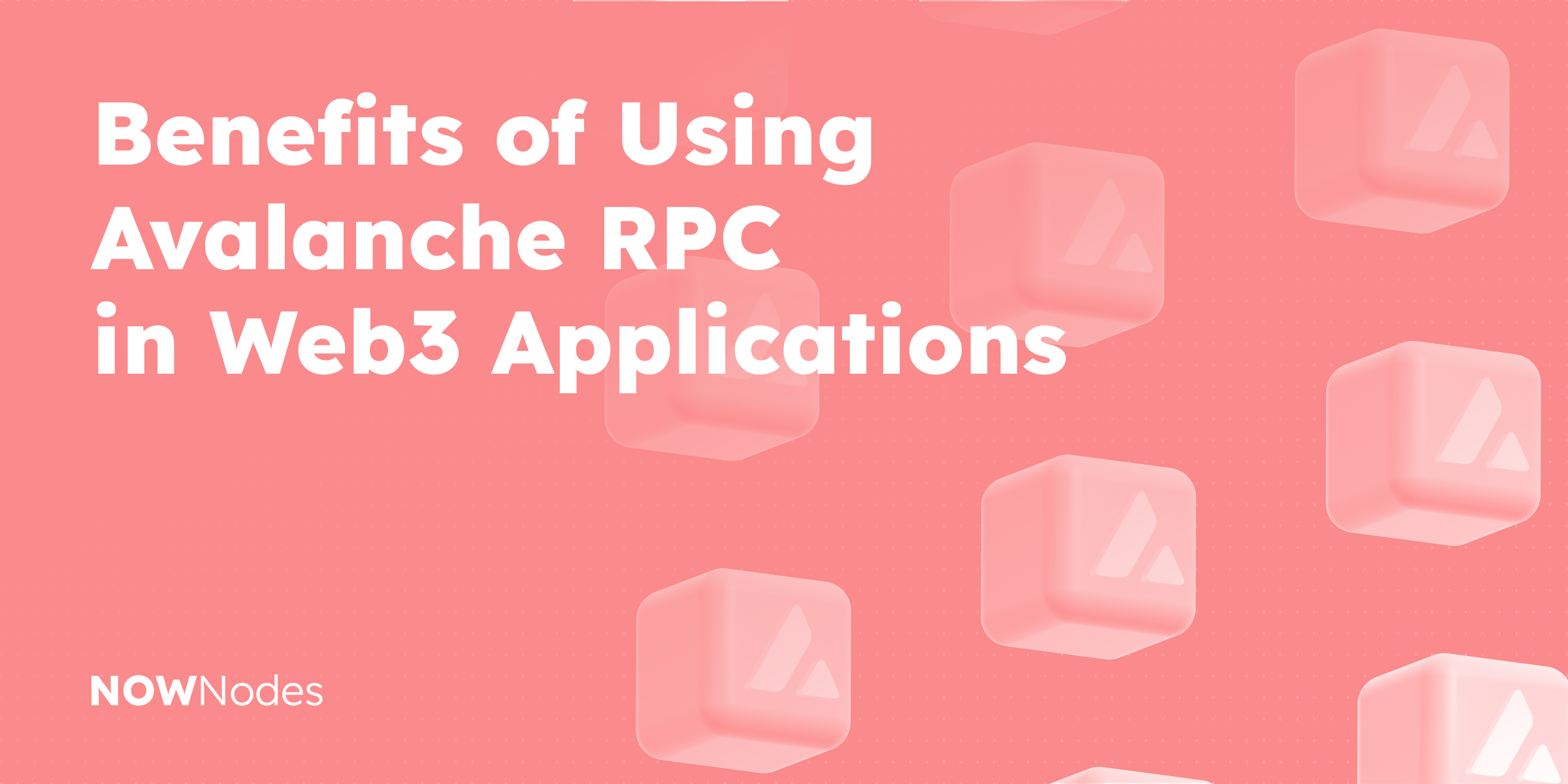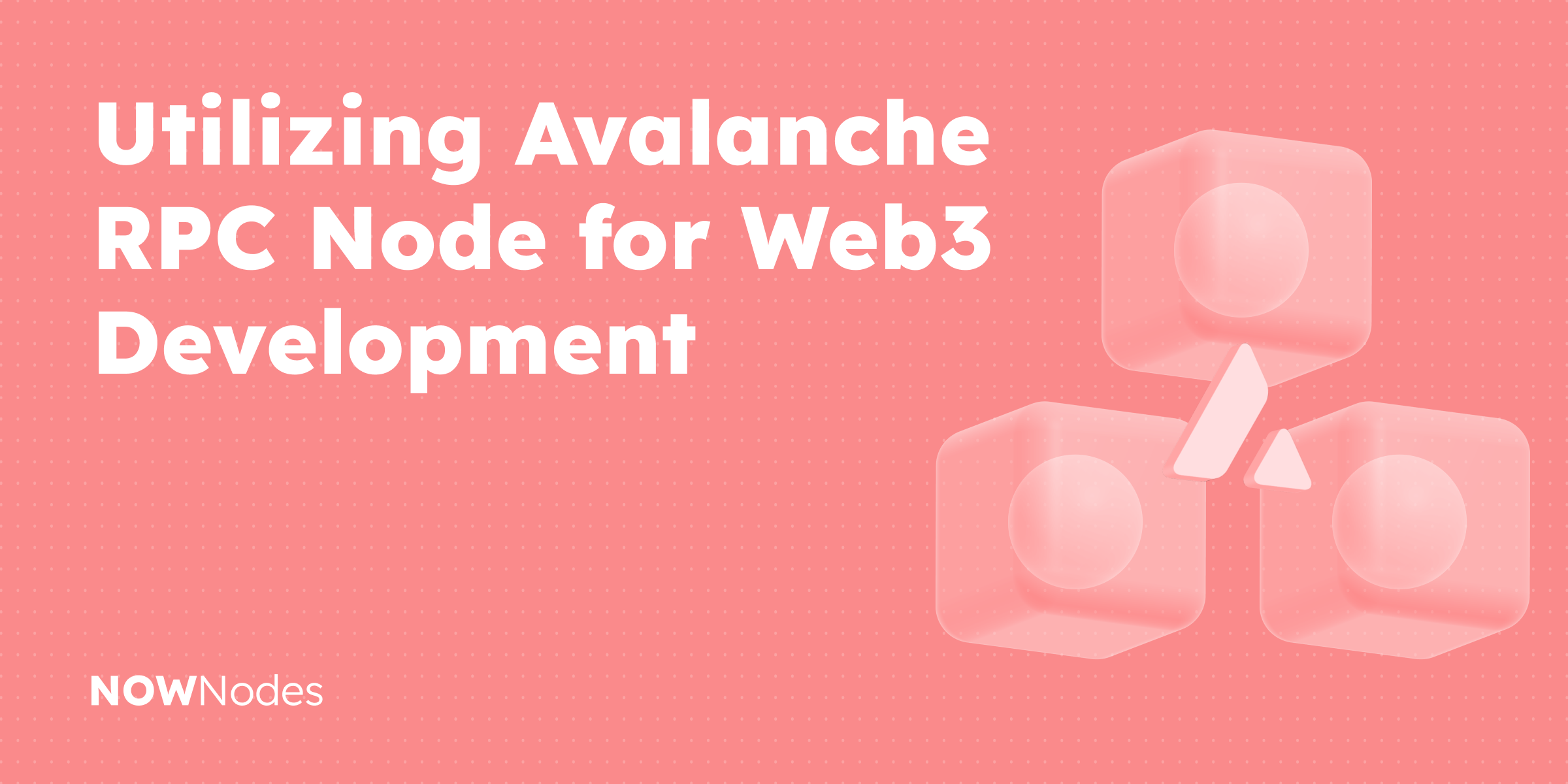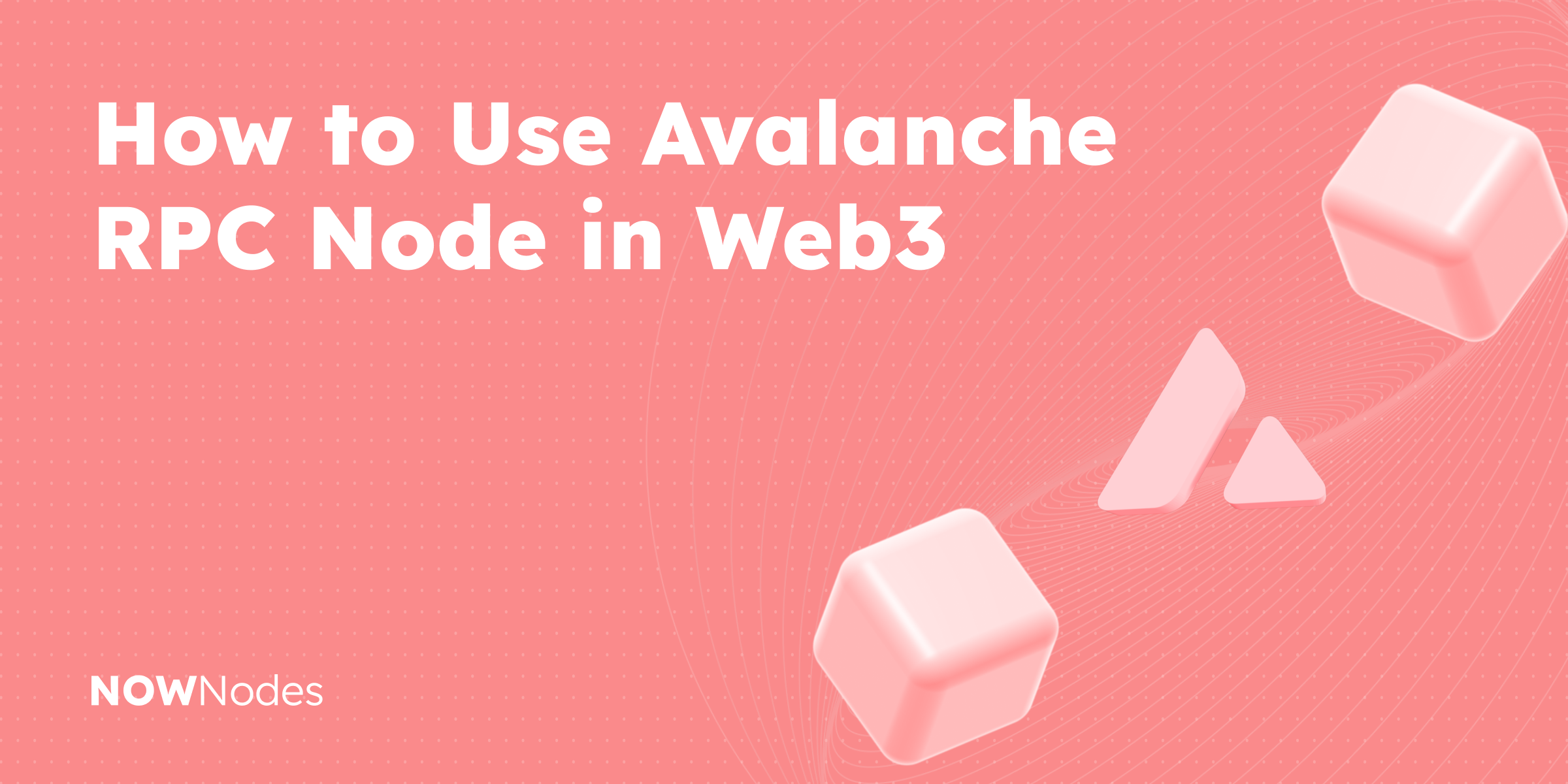In this article, we will explore the benefits of Avalanche RPC and how it can streamline your Web3 development process. Additionally, we will introduce NOWNodes, a reliable Avalanche node provider, and discuss how it can help harness the full potential of Avalanche RPC for your projects.
Let’s start with exploring the benefits of Avalanche RPC in Web3 development.

Benefits of Using Avalanche RPC in Web3 Applications
In the world of blockchain development, Avalanche has emerged as a powerful platform for creating decentralized applications (DApps). To interact with the AVAX network and leverage its capabilities, developers often rely on an Avalanche RPC (Remote Procedure Call) Node. Utilizing an AVAX RPC Node offers several benefits for web3 development.
Integrating Avalanche RPC in Web3 applications offers numerous benefits.
- Firstly, it allows developers to interact with the AVAX network and perform various operations such as querying blockchain data, submitting transactions, etc. This level of accessibility opens up a world of possibilities for developers to build innovative dApps on the Avalanche platform.
- Secondly, Avalanche RPC provides real-time updates on the network status, transaction confirmations, and other important metrics. This enables developers to monitor and react to changes in the AVAX network promptly, ensuring the smooth functioning of their applications.
- Lastly, Avalanche RPC offers a high degree of reliability and scalability. With the ability to connect to multiple Avalanche nodes, developers can distribute the workload and ensure uninterrupted service even during periods of high traffic.
Overall, using Avalanche RPC in Web3 applications provides developers with the tools and capabilities to build robust, scalable, and efficient applications on the Avalanche blockchain network.
To start leveraging the power of Avalanche RPC, developers need to access Avalanche nodes. Below we are going to explore the ways to access an AVAX node for RPC.
Accessing an Avalanche Node for RPC
Setting up an AVAX node for RPC can be done by yourself. Alternatively, you have the option to access an Avalanche full node for RPC with the help of NOWNodes, a trusted Avalanche node provider as well as other blockchain nodes.
Just follow these simple steps to access an AVAX RPC Node with NOWNodes through an Avalanche API key:
- Sign up for a new account: Start by signing up for an account on the NOWNodes website.
- Choose a tariff plan: NOWNodes offers different plans based on factors such as the number of requests, data transfer, and support level.
- Choose Avalanche as the blockchain: If you have selected a FREE plan, you will be proposed to choose 5 networks to access. Look for “AVAX” in the list on the page and click on the “ADD” button.
- Add a private API key: Navigate to the “DASHBOARD” page in your account. Look for the “ADD NEW KEY” button and click on it to initiate the process of creating a new Avalanche API key.
- Explore the provided NOWNodes methods: Once you have obtained your Avalanche API key, you can utilize it to connect to the AVAX mainnet network. Explore the NOWNodes Postman to discover all the available AVAX methods.
- Make a request: Use the provided Avalanche RPC endpoint as the base URL for your requests and authenticate your requests by including your Avalanche API key. Send the RPC request to the AVAX RPC node using your chosen programming tool. The Nownodes Avalanche RPC endpoint provides developers with a convenient and efficient way to access the AVAX mainnet.
One of the key benefits of using NOWNodes is its scalability. NOWNodes provides a robust infrastructure that can handle high loads and ensure high availability for your applications. Another advantage of using NOWNodes is its reliability.
How to run an Avalanche RPC Full Node
If you want to run an Avalanche node for RPC by yourself, it is recommended to follow the instructions provided in the Avalanche documentation. The tutorial explains the hardware requirements to run an Avalanche node, such as CPU, RAM, storage, and operating system specifications. The tutorial also provides guidance on setting up the networking environment, whether the node is running on a cloud provider or residential internet connection. To install and run an Avalanche full node for RPC, users can either download the pre-built binary or build it from the source. The tutorial offers instructions for both options.
Remember, it is a challenging experience to run an Avalanche full node for RPC can be challenging due to the complexity of the protocol, technical requirements, network configuration, software dependencies, and ongoing maintenance. It is recommended to have a good understanding of blockchain technology and networking concepts before attempting to run an Avalanche full node. Alternatively, you have the option to save your financial and technical resources by entrusting all the complexities to a trusty Avalanche node provider NOWNodes.
Now that you have run an AVAX Node by yourself or accessed AVAX mainnet with Avalanche node provider NOWNodes, it’s time to explore some tips for utilizing Avax RPC Node for Web3.

Utilizing Avalanche RPC Node for Web3 Development
By leveraging an Avalanche RPC Node, you can unlock a wide range of possibilities and tap into the power of the Avalanche network.
With an AVAX Node at your disposal, you can start building decentralized applications (DApps) on the Avalanche platform. The Avalanche provides a comprehensive RPC API that developers can utilize to access various features and functionalities of the blockchain. The Avalanche API documentation can be found on the network developer portal, which provides detailed information on how to use the Avalanche API and integrate it into your applications. By leveraging the Avalanche RPC API, you can retrieve transaction data, monitor network activity, and more.
The AVAX Node is a powerful tool for Web3 development, and by following the tips below, you can make the most out of its capabilities.
Tips for utilizing Avalanche RPC Node for Web3 development
To enhance Web3 development on the Avalanche network, using the Avalanche RPC Node is key. Follow these tips to maximize its potential:
- Choose the right endpoint: Select the appropriate Avalanche RPC endpoint for your development environment to ensure seamless integration with the AVAX mainnet or testnet.
- Set up a connection: Connect your app to the AVAX Node using libraries like Web3.js or ethers.js by configuring the endpoint URL and port.
- Use JSON-RPC methods: Interact with the blockchain using JSON-RPC methods, such as querying account balances or fetching transaction details.
- Handle errors: Properly handle errors and exceptions to improve stability.
- Optimize performance: Optimize your app by using batch requests, caching, and reducing unnecessary RPC calls to lower latency.
- Monitor network status: Stay informed about the network’s health and upgrades using network explorers and notifications.
- Stay updated: Keep up with the latest Avalanche documentation for new features or changes.
- Join the community: Engage with the Avalanche community for support and collaboration.
By following these best practices, you can enhance the efficiency of your Web3 applications on the Avalanche network.
Best Practices for Avalanche RPC Node Integration
Integrating Avalanche RPC Node into Web3 applications requires careful consideration of best practices to ensure optimal performance and security. Here are some key best practices to keep in mind:
- Load Balancing: To ensure high availability and scalability, it is recommended to distribute the workload across multiple Avalanche nodes.
- Caching: Implementing a caching mechanism can significantly improve the performance of AVAX RPC Node integration. By caching frequently accessed data, developers can reduce the load on the Avalanche node and decrease response times for subsequent requests.
- Error Handling and Retry Mechanisms: When integrating Avalanche RPC, it is crucial to implement robust error handling and retry mechanisms. This ensures that any network or connection errors are gracefully handled, and the integration remains stable even in challenging network conditions.
By following these best practices, developers can ensure the smooth operation of AVAX RPC Node in their Web3 applications and provide an optimal user experience.
Conclusion
Utilizing an Avalanche RPC Node for Web3 development opens up a world of possibilities for creating dApps and interacting with the AVAX network. By understanding the benefits and utilization tips of Avalanche RPC nodes, by following explanations about how to run an Avalanche full node for RPC, and learning best practices, developers can build robust, scalable, and efficient applications that interact seamlessly with the AVAX mainnet network.
Remember, you can streamline your Web3 development process and harness the full potential of the AVAX mainnet network with NOWNodes as your Avalanche node provider. By accessing Avalanche full node and Avalanche RPC endpoint, developers can retrieve blockchain data and integrate it into their applications with their private Avalanche API key. NOWNodes offers a range of benefits that make it an ideal choice for developers looking for enhanced Web3 development on Avalanche.



